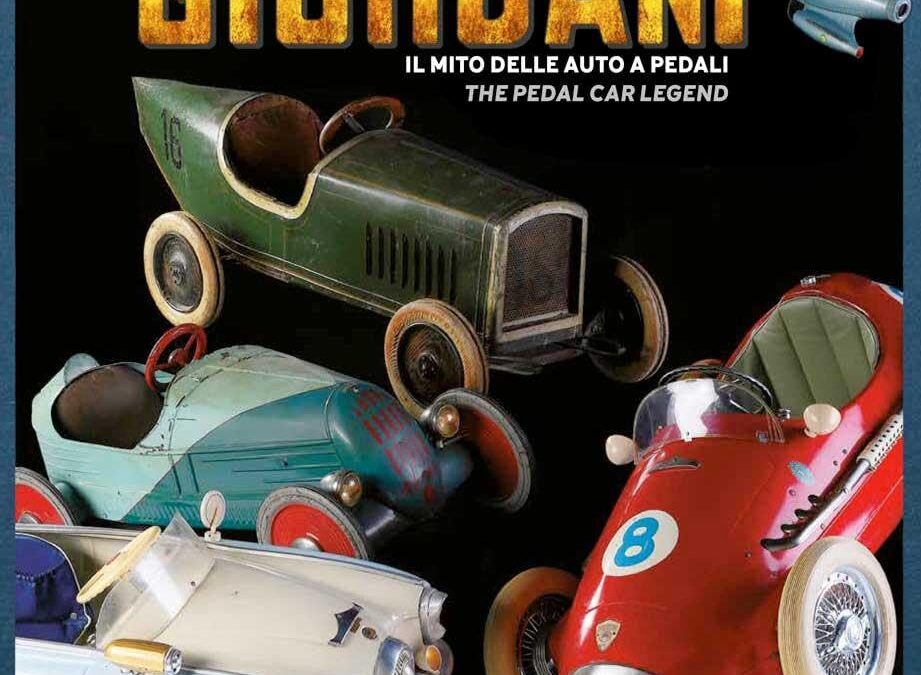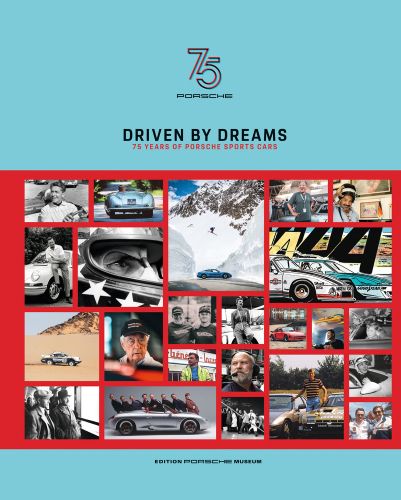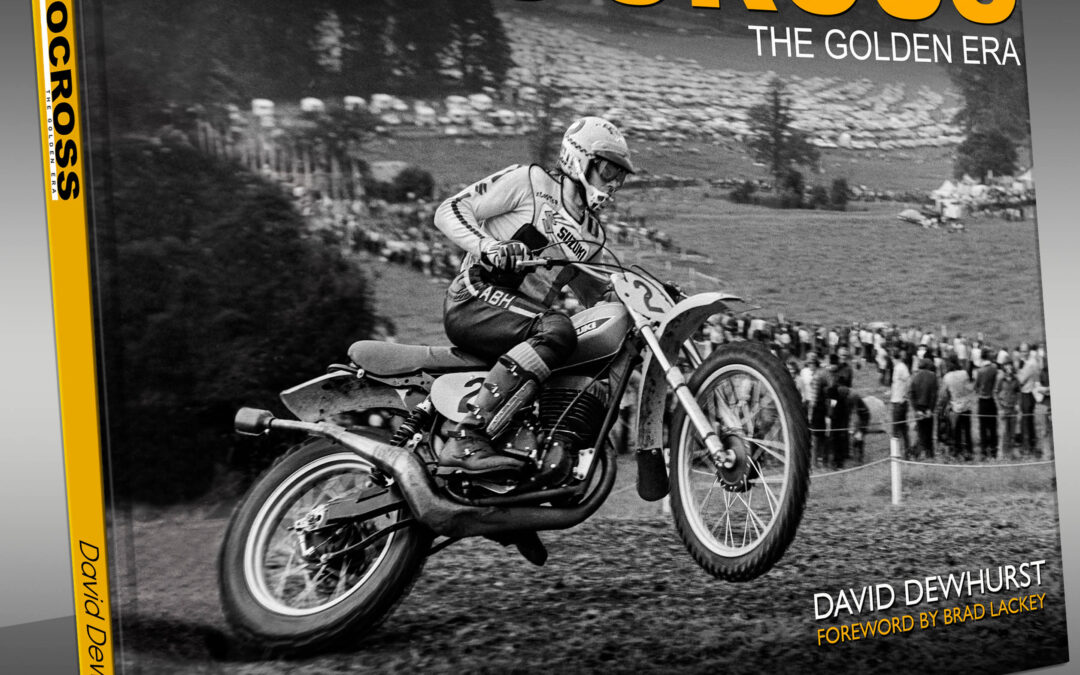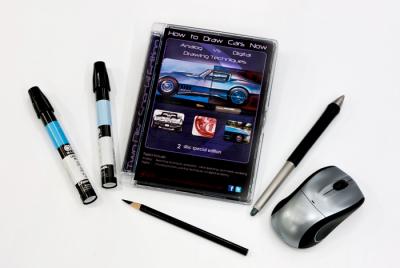
“How to Draw Cars Now: Analog vs Digital Drawing Techniques
Accelerate your passion for drawing cars now! This introductory workshop to Transportation Design is designed to help train you to acquire the fundamental drawing skills taught in some of the most prominent design schools in the country. It’s the perfect solution for students seeking to increase their skill level in drawing. The package includes 2 dvds, a 20 page insert booklet, 4 ebooks, and data files.
Duration: 5 hrs
Disc 1 – Traditional Drawing and Marker Rendering
• Basic Sketching exercises
• Applying Sketching techniques
• Thumbnail Sketching
• Basics in Reflections
• Proportion
• Marker Rendering
Disc 2
Digital Drawing Techniques A step by step process on how to use a wacom tablet and Photoshop to create your digital artwork! The techniques will build on the foundation on disc
• Digital Tools Explanation
• Work space setup
• Simple Rendering
• Intro Speed Painting
• Digital painting
• Intro to Perspective
Ebooks:
• Driven Mavens Mindset – Some of our top blog posts with additional tutorials on digital painting
• Proportions with printable templates
• Value Sketching
• Intro to Perspective with printable templates
”

From Prep to Final Coat is a book that covers all the bases when it comes to restoring or painting a car or motorcycle. It is a complete guide for anyone who is thinking about or restores and or paints cars, trucks, hot rods or motorcycles. It’s designed for the beginner as well as as the more experienced painter or restorer. Its is without a doubt the most comprehensive book ever written on paint and bodywork.
Paint, bodywork, and restoration technology has changed quite a bit in the last 20 and even 10 years and this book is the most comprehensive guide to understanding and using that new technology such as waterborne paints, with easy to understand guides to getting the most out of the products being used.
The book is split into two parts. Part 1 covers everything: explaining solvent and waterborne paint and most materials used in the restoration and painting process, as well as the tools used for these tasks: understanding paint spray guns, welders, plasma cutters, air tools and hand tools. There are 12 step by step instruction chapters that show the processes of restoring and painting a classic musclecar, bodywork, panel bonding seam sealing, repairing and painting plastic and fiberglass parts, designing and mixing custom colors.
Part 1 also contains a very comprehensive and easy to understand guide to painting with waterborne paint. Recent EPA regulations have restricted solvent-based paints for use only in approved professional paint booths, meaning that do-it-yourselfers can no longer use them–and it won’t be long before their use is banned entirely.
Part 1 also features a chapter on Troubleshooting Paint Issues, and how to avoid them.
Part 2 contains 12 chapters that cover painting most kinds of custom artwork on hot rods and motorcycles. There are whole chapters devoted to painting ghost flames, real fire flames, flag graphics, cutting edge and retro flake graphics, wood grain and stone effect basecoats and even a chapter devoted to using waterborne paint to create classic traditional hot rod flames. And Chapter 26 shows how to apply a cleacoarcoat finish over all your hard work, then buff it to a glassy show car result.
JoAnn Bortles has put all her 34 years of restoration, bodywork, painting and custom artwork experience into one easy to follow step by step guide that packs an incredible amount of information into one book.
Automotive Paint from Prep to Final Coat is the first book to provide instruction and hows to for waterborne paints. In addition to this critical information, author and top professional painter JoAnn Bortles covers all the techniques necessary to get the great results your car deserves. From initial body-panel preparation, to troubleshooting common problems, to application of the final coat, and all steps in between, this book is the only reference you will need to ensure your DIY automotive paint job is done right the first time.

The inspiration for the major Apple TV+ series, streaming now!
The riveting history of the American Eighth Air Force in World War II and the young men who flew the bombers that helped beat the Nazis and liberate Europe, brilliantly told by historian and World War II expert Donald L. Miller. The Masters of the Air streaming series stars Austin Butler and Callum Turner, and is produced by Tom Hanks and Steven Spielberg, the legendary duo behind Band of Brothers and The Pacific.
Masters of the Air is the deeply personal story of the American bomber boys in World War II who brought the war to Hitler’s doorstep. With the narrative power of fiction, Donald Miller takes you on a harrowing ride through the fire-filled skies over Berlin, Hanover, and Dresden and describes the terrible cost of bombing for the German people. Masters of the Air is the deeply personal story of the American bomber boys in World War II who brought the war to Hitler’s doorstep. With the narrative power of fiction, Donald Miller takes you on a harrowing ride through the fire-filled skies over Berlin, Hanover, and Dresden and describes the terrible cost of bombing for the German people.
Fighting at 25,000 feet in thin, freezing air that no warriors had ever encountered before, bomber crews battled new kinds of assaults on body and mind. Air combat was deadly but intermittent: periods of inactivity and anxiety were followed by short bursts of fire and fear. Unlike infantrymen, bomber boys slept on clean sheets, drank beer in local pubs, and danced to the swing music of Glenn Miller’s Air Force band, which toured US air bases in England. But they had a much greater chance of dying than ground soldiers.
The bomber crews were an elite group of warriors who were a microcosm of America—white America, anyway. The actor Jimmy Stewart was a bomber boy, and so was the “King of Hollywood,” Clark Gable. And the air war was filmed by Oscar-winning director William Wyler and covered by reporters like Andy Rooney and Walter Cronkite, all of whom flew combat missions with the men. The Anglo-American bombing campaign against Nazi Germany was the longest military campaign of World War II, a war within a war. Until Allied soldiers crossed into Germany in the final months of the war, it was the only battle fought inside the German homeland.
Masters of the Air is “a stunning achievement” (David McCullough), “a fresh new account” (Walter Boyne, former director of the Smithsonian Air and Space Museum) of life in wartime England and in the German prison camps, where tens of thousands of airmen spent part of the war. It ends with a vivid description of the grisly hunger marches captured airmen were forced to make near the end of the war through the country their bombs destroyed.
Drawn from recent interviews, oral histories, and American, British, German, and other archives, Masters of the Air is an authoritative, deeply moving account that “accurately and comprehensively” (Lt. Gen. Bernard E. Trainor, USMC (Ret.) and coauthor of Cobra II) tells of the world’s first and only bomber war.
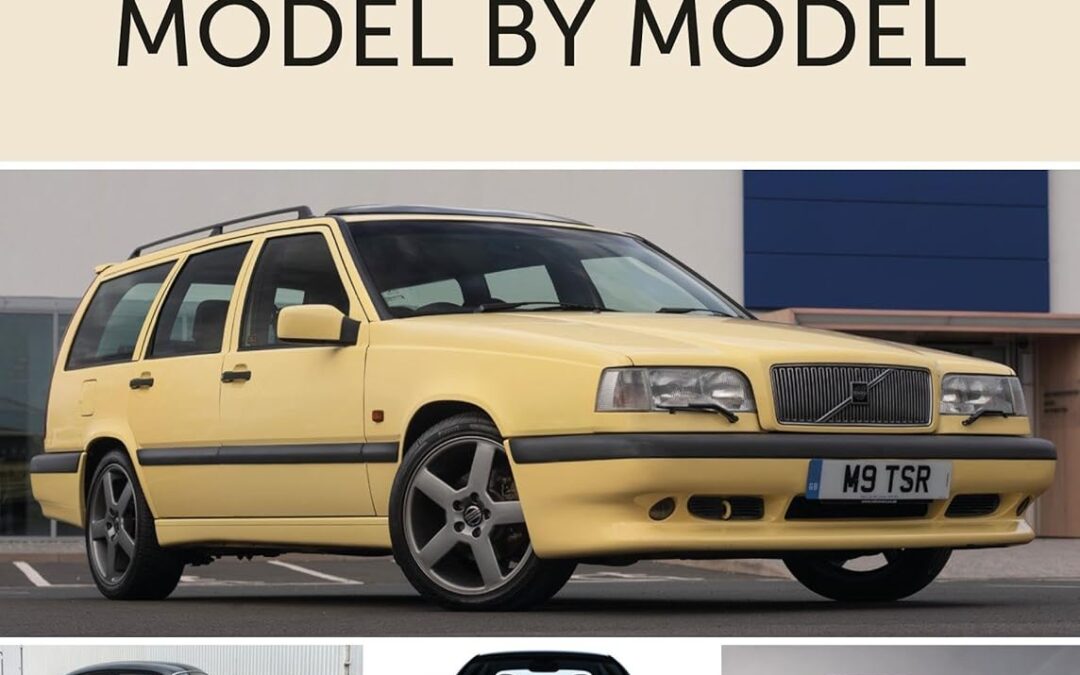
The book invites the reader, both Volvo fans and those with a more general interest in motoring – on board the company’s landmark cars. Volvo Model by Model brings Volvo to life with the feel of the cars from behind the wheel, from the side-valve ÖV4 to the electric C40, with legends like the 240, the XC90 and the 850 in between. Volvo’s marketing strategies from safety to sporty and back again are examined, with thoughts from contemporary road tests. So buckle up your Volvo-patented three-point safety belt, and prepare for the ride. In the 2020s Volvo is undergoing a resurgence, gaining mainstream desirability with record sales for six consecutive years. There is also huge interest in wider Scandinavian culture and design. Volvo Model by Model is a new look at the cars and cultural impact of Volvo. Always daring to be different, no other car manufacturer encapsulates its home nation so completely, accounting for one third of the Swedish dream Villa, Volvo, Vovve. Volvo started in 1927 but the open-topped ÖV4 didn’t sell well in the harsh Swedish climate. This was a rare misstep, although there have some challenging aesthetics on the way like the 760. Volvo survived a failed marriage with Ford, which still produced one of the company’s all-time best sellers. Volvo now has another home, China. Parent company Geely enables Volvo to freely express its Scandinavian style, and today’s slick Swedes were voted the best-designed range of cars by British motorists. Concept Recharge points the way to an electric future.
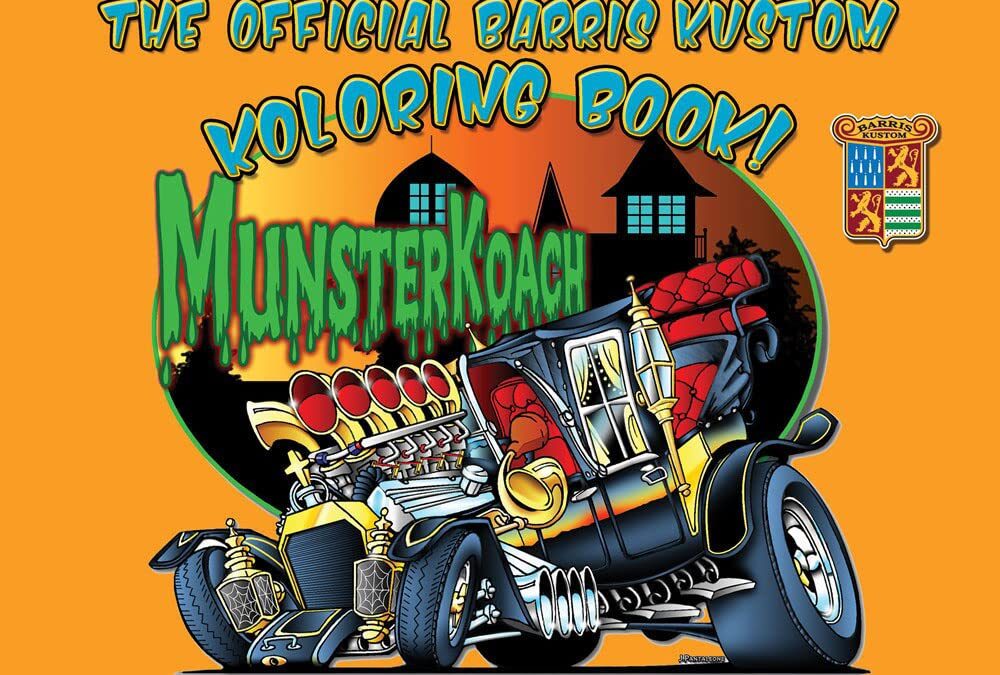
Have fun koloring these famous Barris Kustoms with illustrations by some of the top artists in the industry!
A collection of 26 illustrations of select cars, the design styles range from lowbrow to semi-realistic. Each image reflects the Barris Kustoms style and honors what George, Sam and Barris Kustoms were all about.
Add your own paint job to these unique vehicles:
Kopper Kart – Sam’s Merc – Emperor – Ala Kart – Silver Sapphire – Golden Sahara – Vox Mobile – Moonscope – Turbo Sonic – XPAC 400 – Beverly Hillbillies – Drag-u-la – Munster Koach – The CAR – Elvira Macabre Mobile – Red Foxx Wrecker – ZZR – Calico Surfer – Surf Hearse – Ice Cream Truck – Mail Truck – Alvin’s Acorn – Hirohata Merc
George Barris is undisputably the “King of the Kustomizers,” the most phenomenal kustom car builder ever. Barris created some of the best known and iconic cars of the 20th century, inlcuding the original TV Batmobile, the Munsters Koach, Hirohata Merc, Ala Kart and countless other made-to-order vehicles for movies, TV, and for the private use of his celebrity clients.
Art by Vince Ray, Dennis McPhail, Jeff Allison, Johnny Ace, Mike Bell, Shawn Dickinson, and Stephen Sandoval!

• Star photographer René Staud provides the ultimate proof: Black is beautiful
• From the legendary Alfa Romeo 8C from the 1930s, to the Bugatti Veyron Grand Sport Vitesse, the fastest open-top series sports car
• With exciting texts by Jürgen Lewandowski and contributions by Andrea Zagato (CEO Zagato), the head of design at Mercedes, Gorden Wagener and design critic Stephen Bayley
René Staud, the grand master of automobile photography, has published a new illustrated book. In his coffee-table book Black Beauties, the automotive photographer devotes himself entirely to the color black. In this extraordinarily book, Staud takes car lovers on a journey through time and presents the top models of the world’s greatest sports car brands. From the legendary Alfa Romeo 8C from the 1930s, to the declared goddess Citroën DS, to the fastest open-top series sports car, the Bugatti Veyron Grand Sport Vitesse, the star photographer demonstrates the aesthetics that the color black lends a car. Staud’s photographs are characterized by his trademark striking style and uniquely showcase the classic elegance and sporting potency of the vehicles. But this impressive coffee table book does not only inspire with its great photos. The texts are by Jürgen Lewandowski, a luminary in automotive journalism and author of over 90 books on the subject. In addition, comments by Andrea Zagato (CEO Zagato), Gorden Wagener (head of design Mercedes) and Stephen Bayley (journalist and design critic) are included to provide the reader with specific insider knowledge from the industry. Text in English and German.
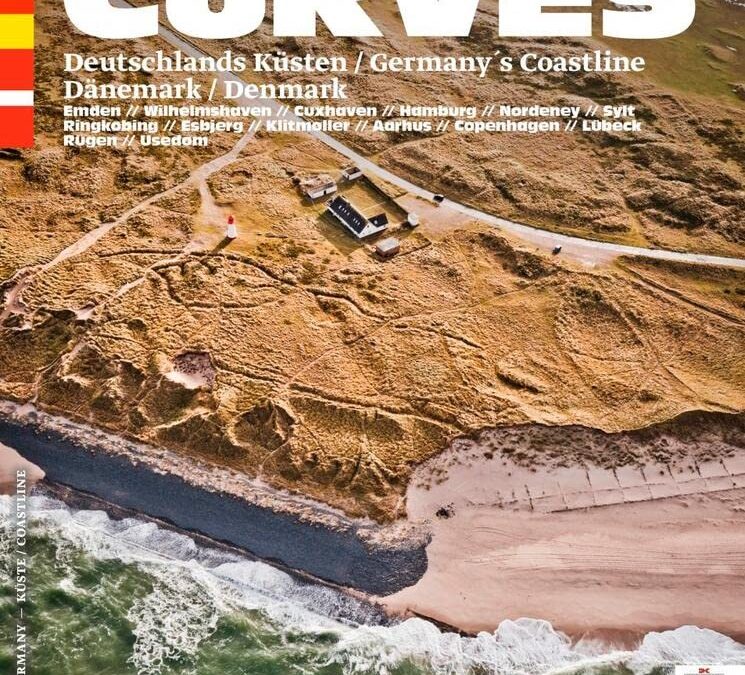
• Beautiful photographs portray the stunning coastal roads of Germany
• A new addition to a highly successful series
• Perfect tips for routes and sightseeing
You do not need to go to California for scenic coastal roads or relaxed cruising – not when you have that right on your doorstep in Europe. Instead of chewing gum, eating burgers and drinking Coca-Cola, your traveling companions will experience liquorice, tea and shrimp rolls – and, of course, Porsche. In the latest Curves volume, Stefan Bogner travels the German coastline from von Emden to Hamburg, visits the North Frisian island Sylt, and takes a trip to Denmark. From Klitmoeller he goes to Copenhagen and Lübeck. The journey comes to an end in between seaside resorts and chalk cliffs on Rügen, an island in the Baltic. Text in English and German.
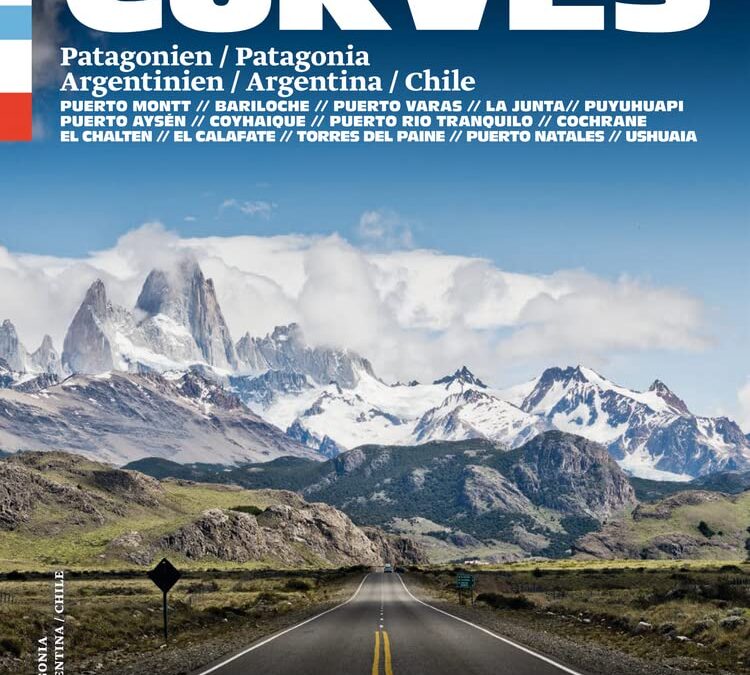
Ready for a trip to the “end of the world”? Patagonia stands for infinite and awe-inspiring landscapes, glistening glaciers and majestic peaks. Exclusively for the CURVES magazine, photographer Stefan Bogner explored the most beautiful scenic roads of this unique area.
Marvellous aerial views show exciting routes right in the middle of nowhere. No matter whether you’re driving casually through the wild steppe in your caravan or prefer the thrills of winding roads with breathtaking views: The extraordinary nature experience makes your trip most certainly an unforgettable journey.
– Patagonia: Pictures of an overwhelming landscape you have never seen like this before
– The loveliest routes and loneliest mountain roads: with maps for route planning
– Unique driving experience on endless roads: for tours by car, motorbike, and caravaning
– Exquisite recommendations: Patagonia‘s best hotels and sights
– CURVES – the passion for lovely curves: an exceptional mix of travelogue and illustrated book
Delightful driving on the world’s most beautiful roads: Patagonia for individualists. Mountain passes with a view, matchless mountain panoramas and vast untouched plateaus: the characteristic landscape at the south end of Chile and Argentina is full of highlights. “Soulful Driving” is Stefan Bogners‘ motto for leisurely road trips, where you set the pace. To top this off, he recommends comfortable accommodation, fine restaurants and sights worth seeing.
Enjoy the airflow and find out where armadillos and guanacos bid good night: With CURVES Patagonia you will explore and fall in love with scenic roads and find the best tips for tours on two or four wheels.
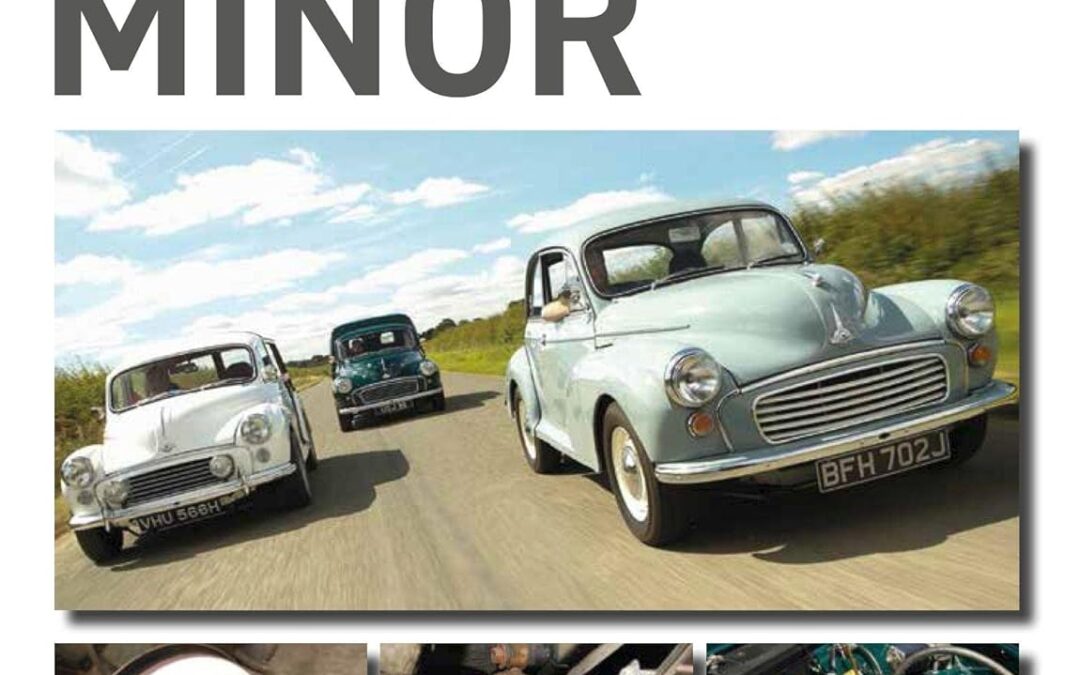
Morris Minor expert Matt Tomkins provides practical advice on maintaining and modifying your Morris Minor. With safety information throughout, this book provides a number of step-by-step guides on how to fit a wide range of simple and more sophisticated upgrades to bring your Morris Minor into the 21st century. Includes sections on Routine servicing of the engine, gearbox, clutch, differential, brakes, suspension, electrics and structure. Modifications and upgrades to the engine, gearbox, wheels and tyres, brakes, suspension, electrics and seats. Modifying the body including GRP panels, weather strips and identifying chop top convertibles. Fitting mod cons such as gauges, heaters, radio/ICE, 12 volt accessory sockets, sound deadening, heated screens, wiper upgrades. With six case studies to show what other owners have achieved

Picturing Apollo 11 is an unprecedented photographic history of the space mission that defined an era. Through a wealth of unpublicized and recently discovered images, this book presents new and rarely-seen views of the people, places, and events involved in the pioneering first moon landing of July 20, 1969.
No other book has showcased as many never-before-seen photos connected with Apollo 11, or as many photos covering the activities from months before to years after the mission. Starting with the extensive preparations, these images show astronauts Neil Armstrong, Michael Collins, and Buzz Aldrin training for the flight, as well as the stages of the massive Saturn V rocket arriving at the Kennedy Space Center for assembly. They capture the media frenzy over the unfolding story and the “moon fever” that gripped the nation.
Also featured here are shots of incredible moments from the mission. In these images, spectators flock to Cape Canaveral to watch the mighty Saturn V launch in a cloud of fire and thunder. Armstrong and Aldrin step out of the lunar module Eagle onto the surface of the moon. The command module Columbia splashes down in the Pacific Ocean, and the extraordinary voyage is celebrated around the world, and in the following decades.
Most of the photographs were selected from NASA archives and the collection of J. L. Pickering, which is the world’s largest private collection of U.S. human space flight images. The accompanying text by veteran space correspondent John Bisney details the scenes, revealing the astonishing scale and scope of activities that went into planning and executing the first moon landing. This book commemorates the historic mission and evokes the electric atmosphere of the time.
Foreword by Rick Armstrong

The world will always remember Neil Armstrong and Buzz Aldrin for their first steps on the moon, yet few today hold in respect the sites that made these and other astronauts’ journeys possible. Across the American landscape and on the lunar surface, many facilities and landing sites linked to the Apollo program remain unprotected. Some have already crumbled to ruins–silent and abandoned. The Final Mission explores these key locations, reframes the footprints and items left on the moon as cultural resources, and calls for the urgent preservation of this space heritage.
Beginning with the initiation of the space race, the authors trace the history of research, training, and manufacturing centers that contributed to lunar exploration. From the early rocket test stands of Robert H. Goddard, to astronaut instruction at Meteor Crater, to human and primate experiments at Holloman Air Force Base, innumerable places proved critical to developing the equipment for exploring space, surviving the journey, and returning to Earth safely. Despite their significance to the history of human spaceflight, many landmarks face the threat of damage or destruction. Most alarming is that the rapid advancement of technology renders stations obsolete long before they are deemed worthy of preservation. Moreover, the lack of precedence for protecting off-planet artifacts poses a unique challenge for space archaeology. While NASA’s 2011 recommendations for spacefarers suggest avoiding close proximity to this cultural landscape, the authors advocate stronger routes of preservation and present models for safeguarding space history–both on Earth’s surface and beyond.
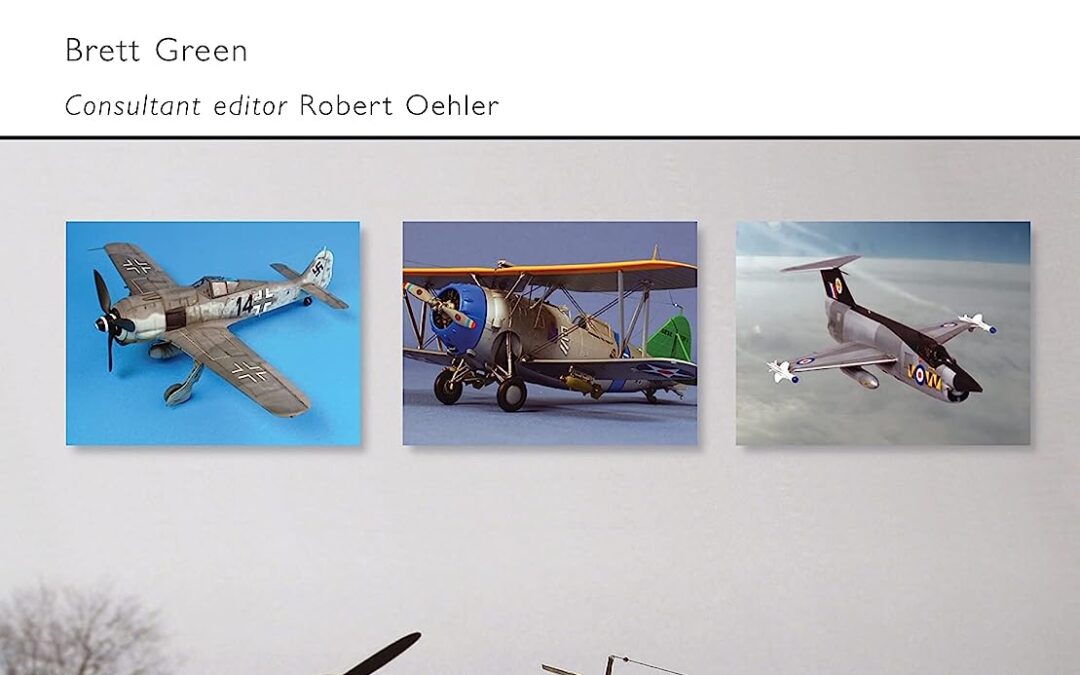
Brett Green, one of the hobby’s leading names, provides a comprehensive introduction to all of the basic techniques and materials needed to build scale aircraft, from first opening the kit box to displaying the finished model – all in one clear and easy-to-follow expert guide. The many detailed photographs with step-by-step captions, and the accessible and informative text cover every aspect of aircraft kit construction from initial preparation through all stages of assembly to detailed finishing. This is an essential resource for the novice aircraft modeller.

Discover a fascinating array of special edition Camaros written by Chevrolet historian and COPO authority, Matt Avery.
Chevrolet’s iconic Camaro arrived in the fall of 1966 and, although tardy to market, it came ready to mix things up in the wildly popular “pony car” segment. Ford’s Mustang was a runaway success, but this new competitor reined in momentum by offering customers an even closer friend of driving enthusiasts.
A credit to General Motors, the Camaro charged hard out of the gate, becoming an instant hit. In each of its first three years, it sold almost a quarter million units, causing a decline in sales for the crosstown Detroit rival. In the decades to follow,
Chevy crafted Camaro variants to suit everyone with enterprising hot rodders and performance tuners always taking it one step further. Enter the high-octane world of Camaro special editions.
Driven to achieve their own competition success and following the high-revving demands of enthusiasts, numerous Camaro special editions have been produced over the years, becoming some of the most collectible cars of all time.
Covered here are not only the factory models such as Indy 500 and Brickyard 400 pace and festival cars, ZL1s, anniversary editions, IROC-Zs, Player’s Challenge, Hot Wheels editions, Z/28s, and RS/SS cars. Also, Camaro Special Editions covers the legendary COPO cars and dealer go-fast specials from builders including Yenko, Dana, Nickey, Berger, Baldwin-Motion, Gorries, and Dick Harrell.
More modern performance editions are covered as well with Callaway, SLP, SVE, GMMG, Earnhardt, and more. Detailed information is provided on the most notable models from 1967 to today, including build numbers, production specs, and their collectability.
This book is a must-have resource for the Chevy and Camaro faithful.

The Audi R8 was the first in a line of world-beating sports-prototype cars from the Ingolstadt marque which would dominate Le Mans, and would see Audi remain at the forefront of international sports-car racing for over 15 years.
If such an award could go to a machine, Audi ‘R8-405’ – the car featuring in this book – was surely the ‘Man of the Match’ for the 2000 Le Mans 24 Hours. In the end it would finish second, behind one of its team mates which had a far less-troubled run, but it was not for want of trying by Allan McNish, his co-drivers Stéphane Ortelli and Laurent Aïello and their mechanics.
The Audi R8s would go on to dominate endurance racing for a further five years. The cars had already shown what they were capable of by finishing first and second on their debut, in the 12 Hours of Sebring in March 2000.
At Le Mans, apart from a brief aberration when a Panoz led under a full course yellow, ‘R8-405’ led the race for six hours. Trouble then intervened, but the car’s drivers never gave up, McNish setting fastest lap of the race in the morning still chasing his team mates Frank Biela, Tom Kristensen and Emanuele Pirro in the eventual winning sister car. That car would soon be on its way to Audi’s museum, but ‘R8-405’ would race on in the American Le Mans Series (ALMS), driven later that year by Biela and Pirro and winning at Texas Motor Speedway and Las Vegas.
By the end of the season, ‘405’ and the other 4-series 2000-season R8s would be rendered almost obsolete by Audi’s introduction of a direct-injection engine for its new 5-series R8. That did not stop ‘405’ from competing for a further year in the ALMS, albeit in private – Champion Racing – hands, with regular drivers including Andy Wallace and Johnny Herbert. Despite its tender years, it would later go on to qualify as an historic car, and a host of new opportunities opened up as it became one of the most raced of all the R8s.
In 2020 the car was acquired by enthusiast Martin Halusa with every intention of taking it back to Le Mans in the future for the biannual Classic races.
The enthralling story of ‘R8-405’ is told in fascinating detail in this book, supported by a stunning array of photographs showing the car in action in its two years of ‘period’ competition, together with a gallery of fine studio images showing this ‘Great Car’ as it is today.
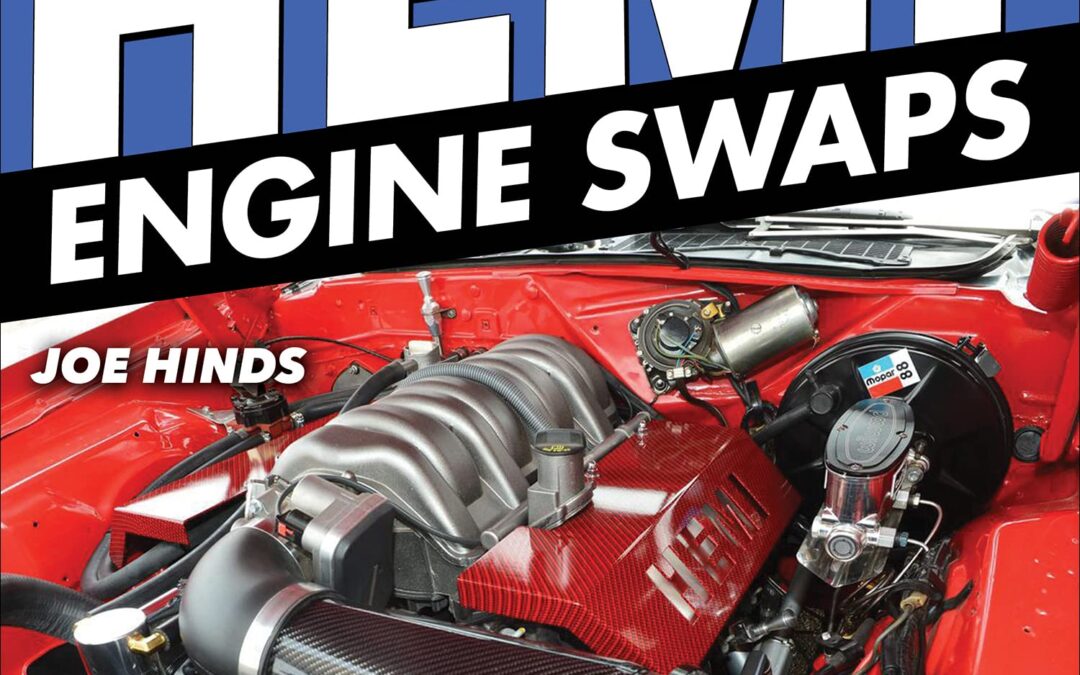
Have you made plans for a new Hemi swap into your classic car? Maybe you’re just curious about the process and want to know how much work is involved. Either way, New Hemi Engine Swaps: How to Swap 5.7L, 6.1L, 6.4L, and Hellcat Engines into Almost Anything has you covered!
Even casual enthusiasts are aware of how many people are swapping modern technology into vintage chassis. Successful LS swaps have been common for more than a decade. They seem to be everywhere among GM enthusiasts.
On the Mopar side, the new Hemi platform is now 20 years old, so plenty of salvage-yard cores are available. With the introduction of the new Hellcat in 2015 (as well as a more robust crate-engine program in recent years directly from Mopar), aftermarket manufacturers have recently seen the wisdom of making peripherals and parts to simplify the process of this swap. Suddenly, swapping a crate Hemi seems as achievable as an LS swap.
In New Hemi Engine Swaps: How to Swap 5.7L, 6.1L, 6.4L, and Hellcat Engines into Almost Anything, expert Joseph Hinds guides you through the process of turning your vintage ride into a modern street machine. The essentials are covered, including engine mounts, transmission cross members, headers that actually fit, and solutions for other common issues. Also covered are fuel-supply items (pumps and tanks) and engine-compatibility concerns (oil filter locations and oil-pan accommodations). Finally, the biggest concerns for most are the wiring, modern power train control modules (PCMs), computer controls, and fuel injection, all of which are covered here as well. There are even step-by-step instructions to fit a modern Hemi into an early-1970s-era Duster as well as a feature about programming aftermarket electronic fuel-injection (EFI) systems.
Now that the degree of difficulty in performing these swaps no longer requires a degree in computer science with welding certifications on the side, many are looking at their vintage Mopars in a new light. Whether you want to do this yourself, farm it out to a professional, or if you are just curious about how it is done, this is the guide for you.
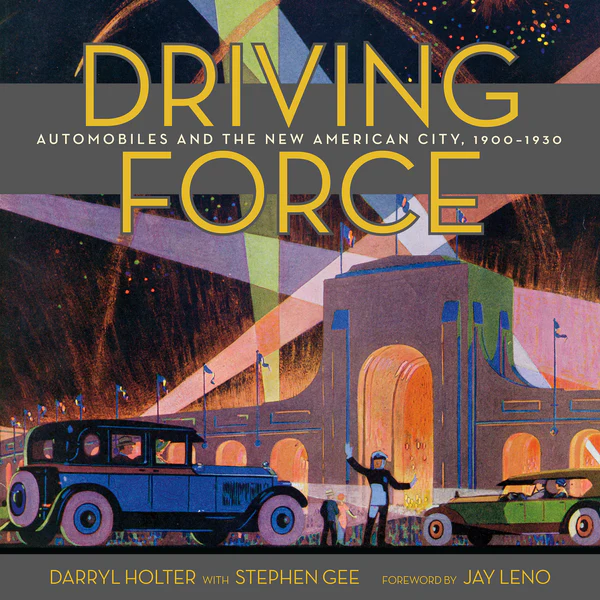
Driving Force: Automobiles and the New American City 1900-1930 (Angel City Press) explores how Los
Angeles’s enigmatic car culture propelled the explosive growth of America’s passion for cars. And with thoroughly researched text and page-after-page of vintage images, it shows how roadblocks that limited the sales of automobiles in the rest of the country, were eliminated in a new-thinking city in the earliest days of the car industry.
At the dawn of the twentieth century, as Los Angeles transformed from a rugged outpost to a booming metropolis, so too did the fledgling automobile simultaneously come of age. Ignited by an unlikely and visionary mix of entrepreneurs who ventured into unknown territory, early adopters broadened the market and convinced the public that cars were no longer a luxury—they were the ultimate modern necessity. From these early enthusiasts, men and women in various business recognized that the automobile would change society and wanted a piece of that action. The city’s auto business emerged initially among bicycle shop owners, carriage retailers, and automobile aficionados who started selling—and repairing!—cars. Their workshops thrived, expanded, and eventually became dealerships, the key component to the auto boom.
In this first major history of dealers at work—and one of the first books to chronicle the early history of cars in Los Angeles—authors Darryl Holter and Stephen Gee share the untold story of pioneering automobile dealers who seized the chance to join a start-up industry that reinvented an American city. Some became wealthy and powerful, others failed. But the lure of the automobile never wavered.
The L.A. dealers helped change the way cars were sold. They championed selling cars on credit while accepting“used cars” that buyers “traded in” so they could buy a new one. They introduced the West Coast to the concept of dealerships with service bays for on-site car repairs; persuaded manufacturers to design cars to their specifications and created custom vehicles and innovations that were copied around the country.
With more than 150 spectacular vintage images—many never before published—Driving Force brings to life the people who made the automobile an icon of the modern American city. In its pages, readers will discover how the story of the automobile is interwoven with Southern California’s unique topography and sun-drenched climate; a new era of women’s rights, and a growing female influence on automobile design; the creation of the Los Angeles Auto Show and the remarkable 1929 fire that threatened to destroy it; and how car dealers launched renowned L.A. radio and television stations, including KNX, KFI, and KCBS-KCAL.
As car collector extraordinaire Jay Leno explains in his Foreword to Driving Force, “Darryl Holter shows that auto retailers connected manufacturers to buyers, changing America and shaping the history, economy, and culture of Los Angeles.”

Expanded new edition
The first edition of the present book was published in 2014 and was quickly acclaimed as the bible of the classic Jaguar racers. This greatly expanded new edition runs to more than 400 pages and contains 500 illustrations. It brings the individual stories of over 150 cars up to date, and includes additional useful information and appendices. Today the name of Jaguar still ranks high in the pantheon of British cars that have won the Le Mans 24-hour race. A mere 20 years since the birth of their first car, Jaguar had become the leading high-performance car in Britain thanks to the revolutionary XK engine, and the XK120 was in its day the fastest production car in the world. While the company had begun to earn its spurs in motor racing, it was a bold step to build a new car with the specific intention of entering Le Mans, at the time the most famous motor race in the world. Remarkably, the new Jaguar C-type succeeded in winning at Le Mans on the first attempt. A further four Le Mans victories followed: in 1953 for the C-type again, and then three wins for D-types from 1955 to 1957, by which time the Jaguar works team had been withdrawn from racing. Private entries of Jaguar C- and D-types in other races continued for many years. The E-type was never as successful in racing, since it was conceived as a GT road car rather than a racer, but the small run of lightweight cars and other competition versions added further lustre to Jaguar’s reputation. C- and D-types were sold in some numbers to private owners on both sides of the Atlantic, many of whom obviously used them for racing, but unlike most later sports-racing cars they could still be used on the road. This was and remains one of their many attractions. Virtually all the cars have survived, and in recent times have seen a steady increase in value. This updated, enlarged and comprehensive new edition of the Register is a tribute to these glorious cars, to the people who were involved in their design and production, and to the drivers who campaigned them.




